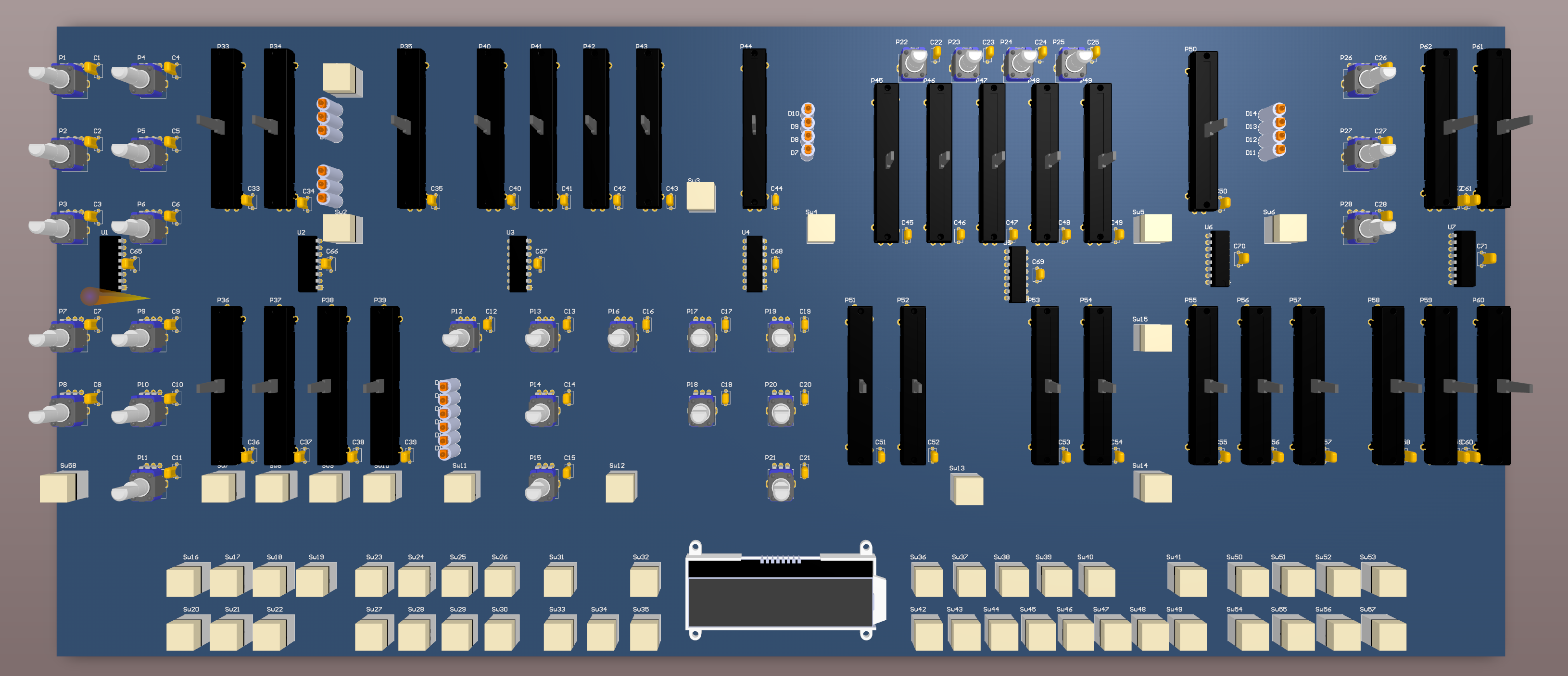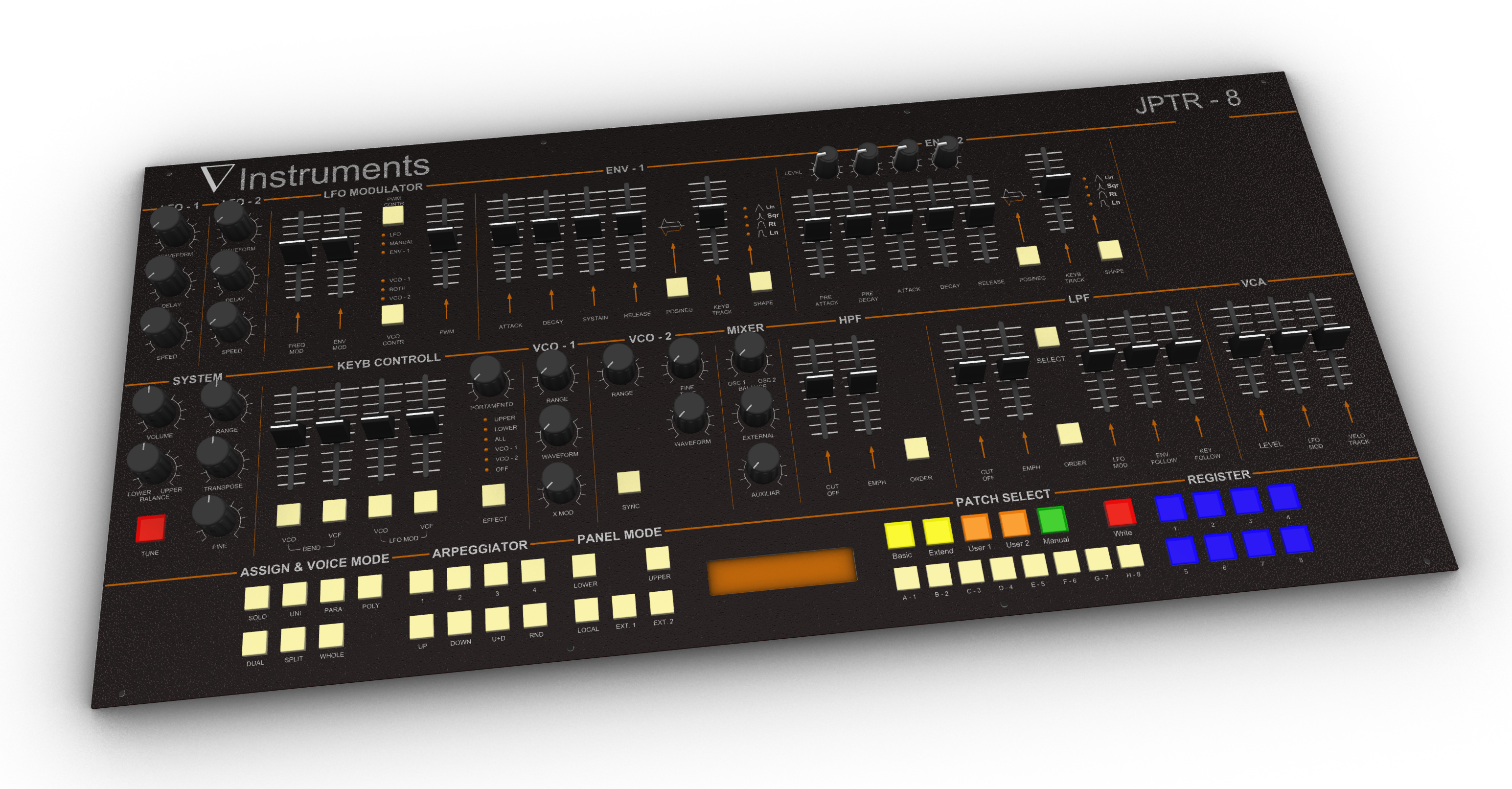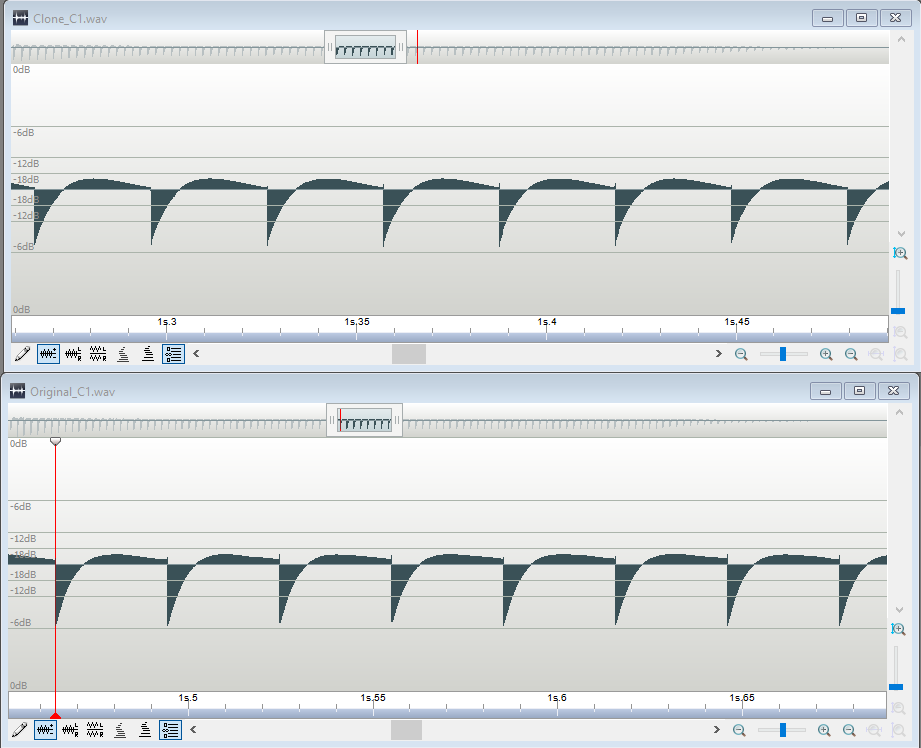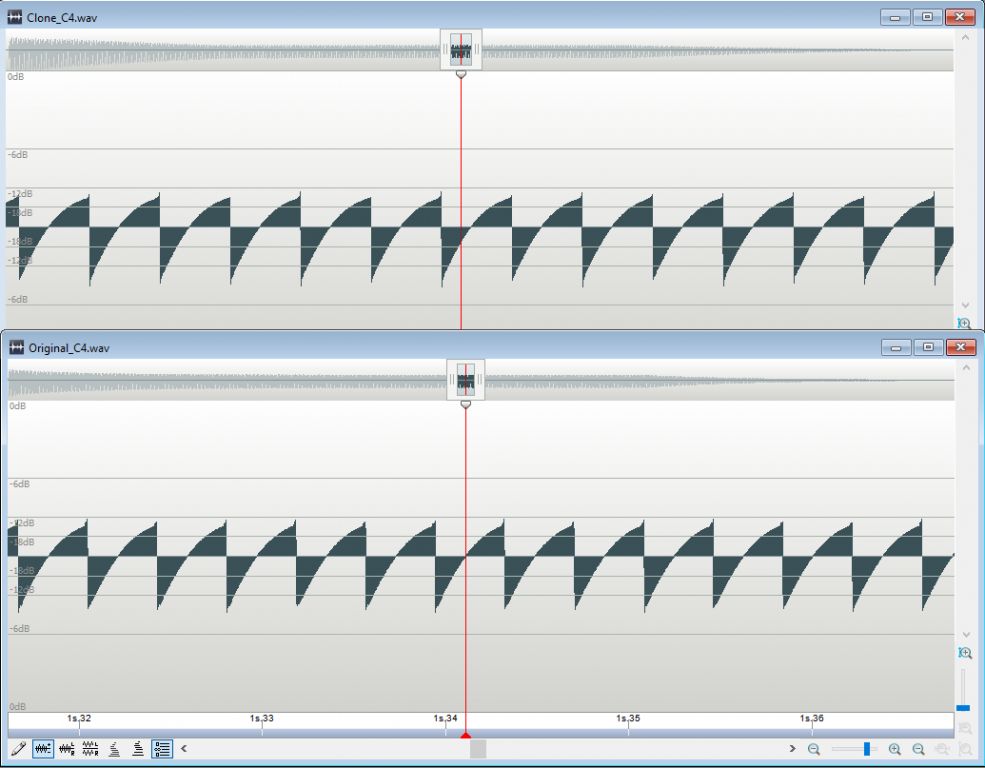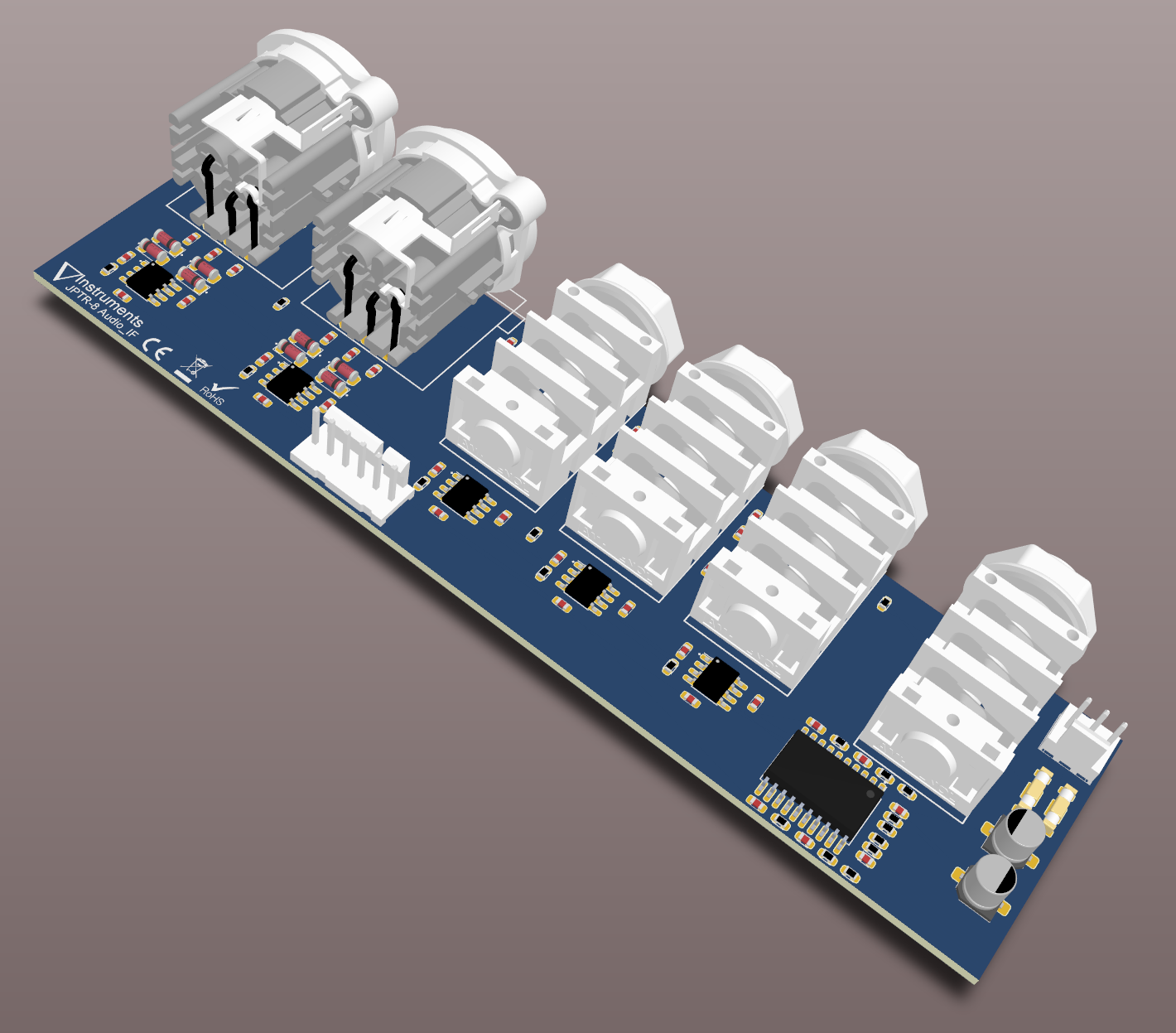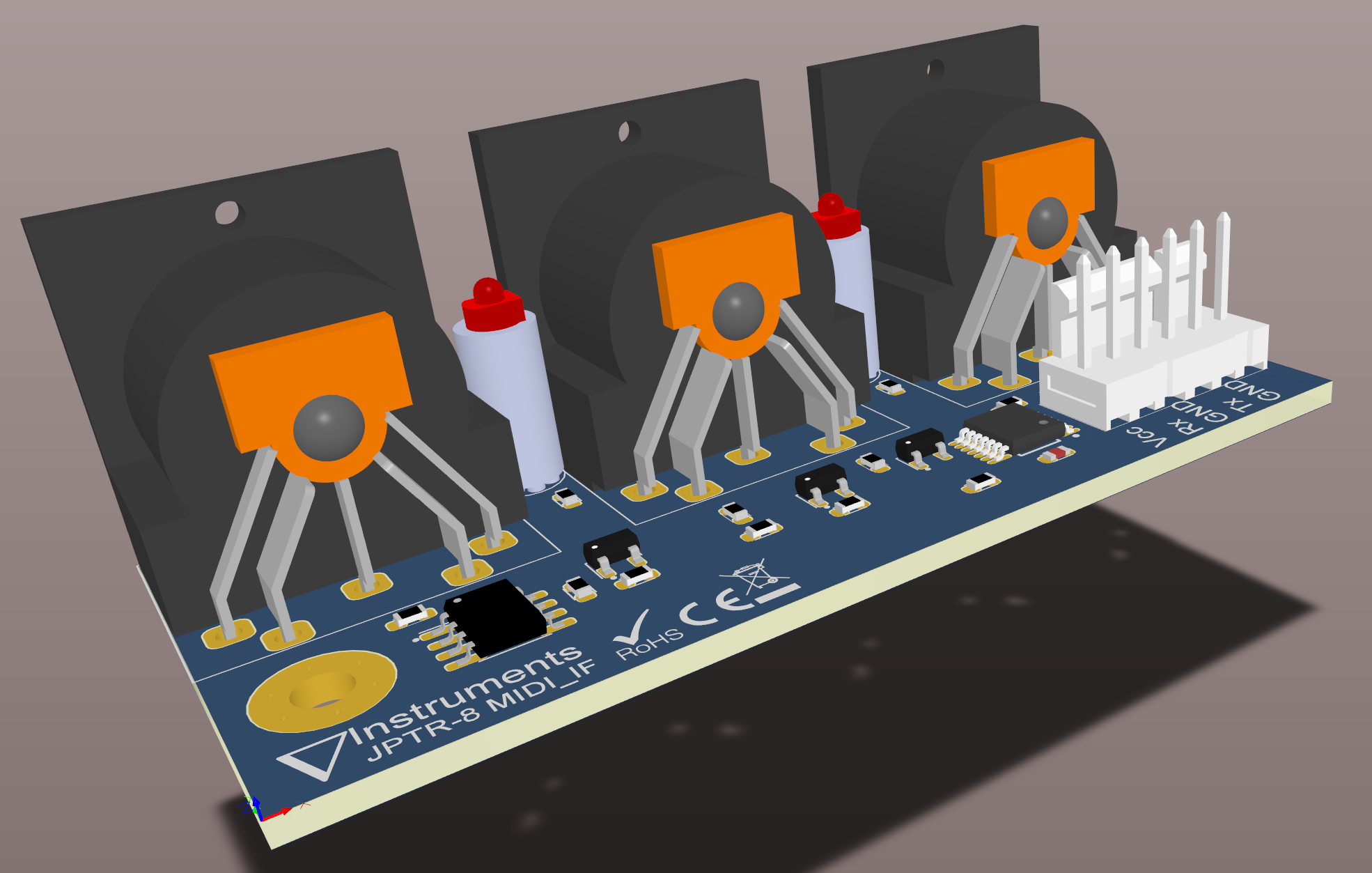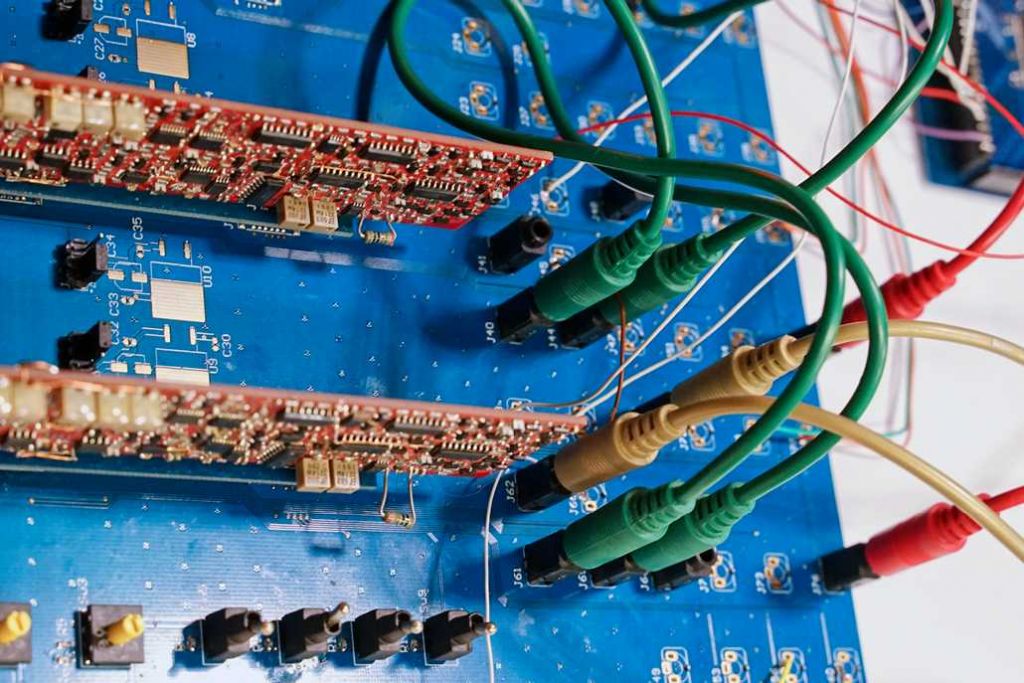As I am continuously designing in SMD, I've started the voice board in SMD.
But, no worries, a Through hole voice board will come.
Currently the voice board holds 351 components (one will need 8 )
To controll 4 voice boards (4 for upper and 4 for lower) one processor is used.
So we will have 8 voice boards (or two big boards with 4 voices), one processor board with two processors.
Edited
All
envelope generators for the 8 VCF's and 8 VCO's and 8 ADSR's are real time calculated.
Here's an extention from the original. Calculating the envelope allows for additional shapes (3 additional in this case)
Then we have the User Interface board.
As this already contains many Through Hole rotary and slide potentiometers,
I'm designing this board Through Hole as from start.
Unfortunately, there will be an SMD processor on this PCB as well.
So, for overall complexity, this should not be a first project.
One has to be pretty swift with a soldering iron to make this to a success.
Estimated total of components for now is around 3150.
Before starting this project, I first tried to get the filter built without the original IR3109.
Here's a sound file comparing the bread board filter with the original IR3109 filter.
View: http://soundcloud.com/boo-gie-879149310/filtercompare6
The next sound file is a comparisson of the original's saw sound and the SMD clone's voice board
View: http://soundcloud.com/boo-gie-879149310/originalvsclonec1c4
The below screen dumps show a comparisson of the original's saw wave and the clone's saw wave for C1 and C4
